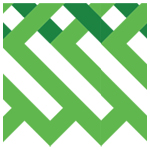Connecting three-digit place value with grouping
The purpose of this activity is to support students in understanding the quantities that three-digit whole numbers represent. Students come to know that the hundreds, tens, and ones digits represent units of different sizes.

About this resource
New Zealand Curriculum: Level 2
Learning Progression Frameworks: Additive thinking, Signpost 5 to Signpost 6
These activities are intended for students who are yet to understand place value with two- and three-digit numbers. By the end of level 2 of The 2007 New Zealand Curriculum and step 5 of Learning Progression Frameworks, students are expected to know most, or all, of their addition and subtraction basic facts (number bonds to 20). Some students will still need to work on their basic facts as they learn about place value with two-digit and three-digit whole numbers.
Connecting three-digit place value with grouping
Achievement objectives
NA2-4: Know how many ones, tens, and hundreds are in whole numbers to at least 1000.
Required materials
- place value materials: individual items grouped into tens, such as BeaNZ in film canisters, ice block sticks bundled with rubber bands (hundreds with hair ties), or a paper form such as Place value people activity. Bundled materials are important as they allow partitioning and combining without the need for “trading” tens blocks for ones.
- calculators
- Use a place value board (Place value board activity) to organise the materials in columns and support calculation strategies. A three-column place value board is available in Place value to four digits activity.
See Materials that come with this resource to download:
- Place value board activity (.pdf)
- Place value people activity (.pdf)
- Place value to four digits activity (.pdf)
1.
Write a three-digit number on the board (or display it digitally) and tell students to make it using materials on a place value board. You might need to first explain how this is done using a smaller number (e.g., 121). Show students how to enter the number on a calculator. This develops the important connection between hearing the words and recording the numerals.
Watch for students who start typing the number as they hear it rather than recognising that each place value is represented by a single digit. For example, a student might enter 400 805, indicating 400, 80, and 5 for the number 485. A good sequence of numbers is 178, 203, 457, and 892. If appropriate to your students' knowledge, you might include te reo Māori kupu for numbers throughout this activity. Note that in te reo Māori, the structure of the names of numbers is different to that in English (e.g., two hundred is rua rau - two hundreds). Consider whether this additional information will help or hinder your students.
2.
Ask students to clear off their place value board. Tell them that you are now going to tell them an amount of objects to gather. They need to collect the objects and make the number using their place value board. You might model this for students initially.
For example:
- Get 3 hundreds, 5 tens, and 7 ones from the set of place value blocks. (Collect the materials.) I am going to put my 3 hundreds, 5 tens, and 7 ones into the correct columns of my place value board.
- What number do you think I have made? How could I figure this out?
Write the number in its expanded and connected forms (300 + 50 + 7 = 357) and make connections between the meaning of each digit in the number. Ask students to type the number into their calculator and tell a partner how many of each place value (i.e., hundreds, tens, ones) each digit represents.
3.
Have students repeat this process in small groups or pairs.

4.
Continue developing students' fluency in recognising the connections between words, numerals, and quantities.
For example, write three-digit numbers and ask students to say the number in words or make it with materials.
Be mindful that asking students to draw diagrams to show the place value structure of numbers can be time-consuming for little gain. It is also highly dependent on their fine motor skills. You might introduce efficient icons to represent hundreds, tens, and ones, like:

1.
Mask place value-based materials and ask students to image the structure of the quantities. For example, build a model of 582 and ask:
- I made 582 under this cover. (Make sure the number is visible.)
- What does it look like?
- How many hundreds are there?
- How many tens are there?
- How many ones?
The aim is for students to know the structure of the quantity from the digits in the numbers. Counting in hundreds or tens is a sign that they are not doing this. They are attending to the process of counting rather than the structure of the three-digit amount.
The quality of the images on this page may vary depending on the device you are using.


